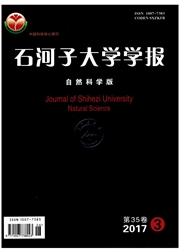

 中文摘要:
中文摘要:
利用棉花长期连作定点微区试验,通过比较秸秆还田和非秸秆还田条件下长期连作对棉花光合作用及叶绿素荧光参数的影响。结果表明:随着连作年限增加,棉花叶片叶绿素相对含量和光合速率呈下降趋势,特别是连作20年后光合速率下降明显,秸秆还田后连作5、10和15年分别比非秸秆还田增加了11.9%、1.8%和3.6%,说明连作障碍在短期内表现明显,秸秆还田能在一定程度上缓解棉花连作障碍,但在20年以后连作障碍持续影响棉花的生长。棉花连作5~10年PSII原初光能转换效和PSII潜在活性均表现出先下降后上升的趋势,光合活性受到暂时抑制,光合器官并未受到损伤,说明棉花连作主要是通过降低叶片PSII原初光能转换效率和光化学荧光猝灭系数,引起单叶光合速率下降,最终影响棉花植株生理生长。
 英文摘要:
英文摘要:
Cotton micro-experiment was adopted to study the effect of returning stalk to field on cotton photosynthesis and chlorophyll fluorescence parameters under long-term continuous cropping of cotton.The results show that:with the time of continuous cropping, SPAD value and photosynthetic rate declined.Photosynthetic rate declined considerably after 20-year continuous cropping.The treatment of returning stalk to field increased the values by 11.9%,I.8%and 3.6%,in 5,10 and 15 years of continuous cropping,respectively, indicating that the continuous cropping obstacle had an obvious impact on cotton growth in short term and after 20 years.Returning stalks to field helped to a certain degree ease the continuous cropping obstacles.In 5-10 years continuous cropping,the maximum photochemical efficiency of PS II(Fv/Fm) and PSII potential activity(Fv/Fo) decreased first,followed by increase,photo-synthetically activities were only temporarily inhibited,and photosynthetic organs had not been damaged,indicating that continuous cropping slowed down univalent photosynthetic rate(Pn) by decreasing maximum photochemical efficiency of PS II(Fv/Fm) and photochemical quenching coefficient(qP),and finally affected the cotton plant physiology growth.
 同期刊论文项目
同期刊论文项目
 同项目期刊论文
同项目期刊论文
 期刊信息
期刊信息
